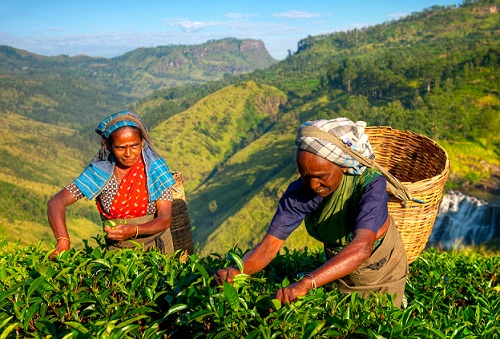The guy in the tea field doesn’t have a LinkedIn profile; he doesn’t know what address he lives on and his name does not appear in any government document. So when your mission is to help him, where do you start?
Nearly 70% of India’s 1.2 billion population lives in rural areas, defined as towns of less than 5,000 people, and depend on agriculture and related activities as the main source of income and employment. A great number of them belong to underserved communities that live in absolute poverty and although the government has been trying to help them, it has not been enough to solve the entire problem. For them, Social Enterprises (SE) are becoming the change agents for improving their perilous living conditions.

Over the past few years there has been a surge in the number of social enterprises in India. These emerging social entrepreneurs are providing low-income communities with products and services that were not accessible or affordable to them before. Essential services like education, healthcare, clean water and livelihood development - earlier thought of as only being provided by the government - are now being provided by Social Enterprises and with higher level of quality. With their help, many villagers have been able to improve their literacy, receive education, gain access to markets and improve their income levels.
When Sattva Media and Consulting, a social organization based out of Bangalore, was approached by one of his social enterprise clients looking to bring portable solar power generators to poor families in rural areas, Sattva ran into the challenge of identifying which would be the best communities to target. “When you are running a program in a country as big as India, one of the challenges you face is to direct your help to the right people, in the most efficient manner” says Vikram Rai, co-founder at Sattva.
I am in India this month participating in a corporate social initiative sponsored by SAP. The mission of my team of two – me and Jody LeBlanc, a colleague from Canada – is to help develop a framework for capturing and tracking social entrepreneurship and social enterprises-related data in India and drawing insights from it. Sattva expects that this effort will help their clients maximize their social impact, foster collaboration and ultimately cultivate an ecosystem in this space.
India needs social solutions that scale. A social enterprise’s ability to collaborate and partner is of critical importance to achieve the power of scale. “Nobody can tell you exactly how many social enterprises there are in India today, in which sector they operate and the social impact their programs are having. There are more than 3.5 million SE and the numbers keep growing.” says Vikram.
And while there is room for all of them to work independently, a lot more could be achieved if social enterprises collaborate and share their successes. Building a strong ecosystem will help SE increase attention to the social and economic value they are creating and as a result attract more donors and impact investors that are demanding more transparency and accountability from the organizations they are funding. Knowing who is who in the space will help connect those that are working on similar projects and contribute to build a community that can leverage each other’s strengths.
Watching life pass by in Bangalore as I sip on a steaming cup of masala tea, I think of the tea-leaf pickers with a hint of hope. And I am grateful to have been given the opportunity of connecting people and dots to help India build a brighter future.
